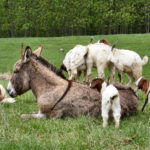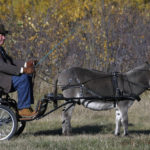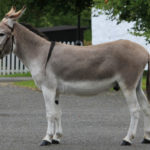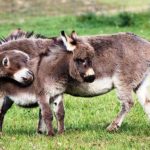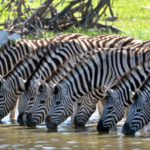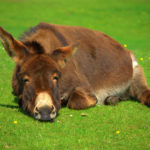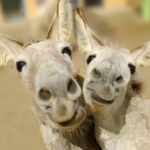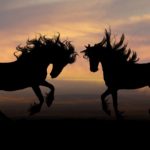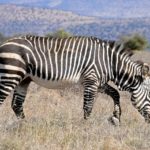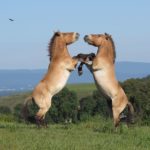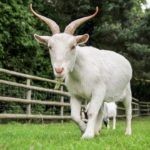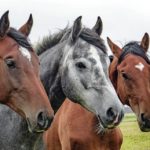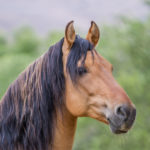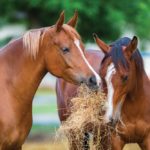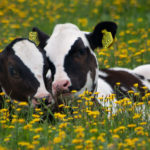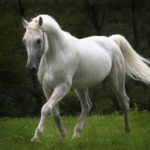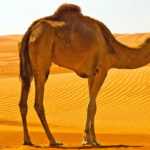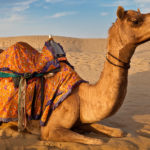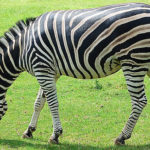25 interesting and fun facts about donkeys
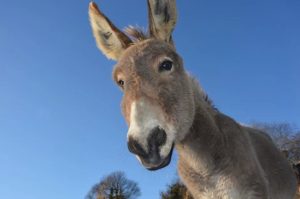 Donkeys have always been considered more modest animals than horses. For centuries, only noble people were allowed to ride horses, but all the rest got only their modest relatives, known for their obstinacy. But do not underestimate them – they certainly have stubbornness, but no less they are famous for endurance, hard work and a high level of intelligence.
Donkeys have always been considered more modest animals than horses. For centuries, only noble people were allowed to ride horses, but all the rest got only their modest relatives, known for their obstinacy. But do not underestimate them – they certainly have stubbornness, but no less they are famous for endurance, hard work and a high level of intelligence.
According to scientists, donkeys were widely used as farm animals for more than 5,000 years, until they were gradually replaced by horses.
The total number of domestic donkeys in different countries is estimated at approximately 40 million. Now this animal has lost its agricultural significance, but in some countries, especially in Africa, it is still in demand.
Apparently, the domestication of wild donkeys occurred even earlier than the domestication of horses. Most likely, they were tamed for the first time in the territory of modern Egypt.
In ancient times, the donkey was highly respected. Then the horses were not yet domesticated, and the donkeys did all their work – they carried various loads and plowed the fields.
In oriental tales, respect for this interesting animal, which always acts as a cautious and prudent hero, often slips.
The image of the famous donkey was created by the French philosopher Jean Buridan in the XIV century. He studied free will as such, and once wrote: “If you put a donkey between two exactly the same armfuls of hay, then he will not be able to choose what he has, because they are the same, and will eventually die of starvation.” Today, a “buridan donkey” is called an indecisive person who cannot make a choice. In fact, this comparison has nothing to do with the actual behavior of animals.
There is a beautiful and very rare cross between a male donkey and a female pony called “donkra”. But such offspring are rarely born, and it is always sterile.
Up to 1.5 million feral donkeys live in Australia. More precisely, it inhabited – a monstrous fire at the turn of 2019-2020 caused great damage to the flora and fauna of this entire continent.
Donkey and donkey are one and the same. Donkeys are usually called domesticated breed, but this name does not apply to wild individuals.
The ancestors of modern domestic donkeys appeared in Africa, and in some countries their wild relatives still live there. In Asia, there are related kulans, but they cannot be tamed.
There are currently two subspecies of wild donkey that are found in Somalia, northern Ethiopia, in Eritrea and on the Red Sea coast. True, in Somalia, almost all animals have already been destroyed by poachers.
In the Palestinian city of Gaza, there is a small zoo in which almost all the animals in which were brought illegally through a tunnel on the border with Egypt. In 2009, due to a military conflict with Israel, the zoo was badly damaged, and two zebras died from malnutrition. Having no money and the ability to import new zebras, the employees put up a pair of donkeys painted in black stripes in their quality.
Dog waltz in different countries is called differently. In Germany, Belgium, the Netherlands – a flea waltz. In Bulgaria, a cat march, and in Finland, a cat polka. In Hungary, it is called the donkey march.
The same donkey was shot in the domestic film “9 Company” that Shurik had performed forty years before, performed by Alexander Demyanenko when filming “The Caucasian Captive”.
The wild donkey is a little-studied animal. He lives in deserts and semi-deserts, family herds, like zebras. The leader of the family group is the old donkey, it includes up to 10 donkeys and young animals. Herds roam long distances in search of water and food, but always behave very carefully.
Pregnancy in these animals lasts longer than in humans, from 12 to 14 months.
People have long discovered that donkeys can successfully breed with horses. The result of such an alliance is called a mule, and is valued for its endurance. True, mules are always sterile.
In ancient Egypt, the number of donkeys in the farm was an indicator of social status. Representatives of the nobility in possession often had more than a thousand goals.
In ancient times, donkey milk was used as a cosmetic product. It was also eaten on a par with sheep or camel.
In captivity, wild donkeys rarely live for more than 20-25 years. Although their home relatives can live half a century, or even more.
Wild African donkeys live in regions with a rather extreme climate, so they have practically no natural enemies. Previously, lions hunted them, but now the habitats of these animals do not intersect.
Donkeys are not really stubborn. It’s just that their instinct for self-preservation is extremely well developed, and it’s almost impossible to get them to do what they don’t want.
These animals are known for their dissonant voices. But they differ in volume, donkey cry can be heard at a distance of up to 2-3 kilometers.
In ancient Egypt, a certain number of donkeys were buried along with the pharaohs and simply noble people. Their remains were discovered at burial sites by archaeologists.
There are currently less than 1,000 wild African donkeys in the world. It is the wild, not feral descendants of the home! In order to save the species, the animal began to be bred in zoos. In the wild, this species may soon disappear, as its representatives willingly interbreed with ordinary domestic donkeys.
